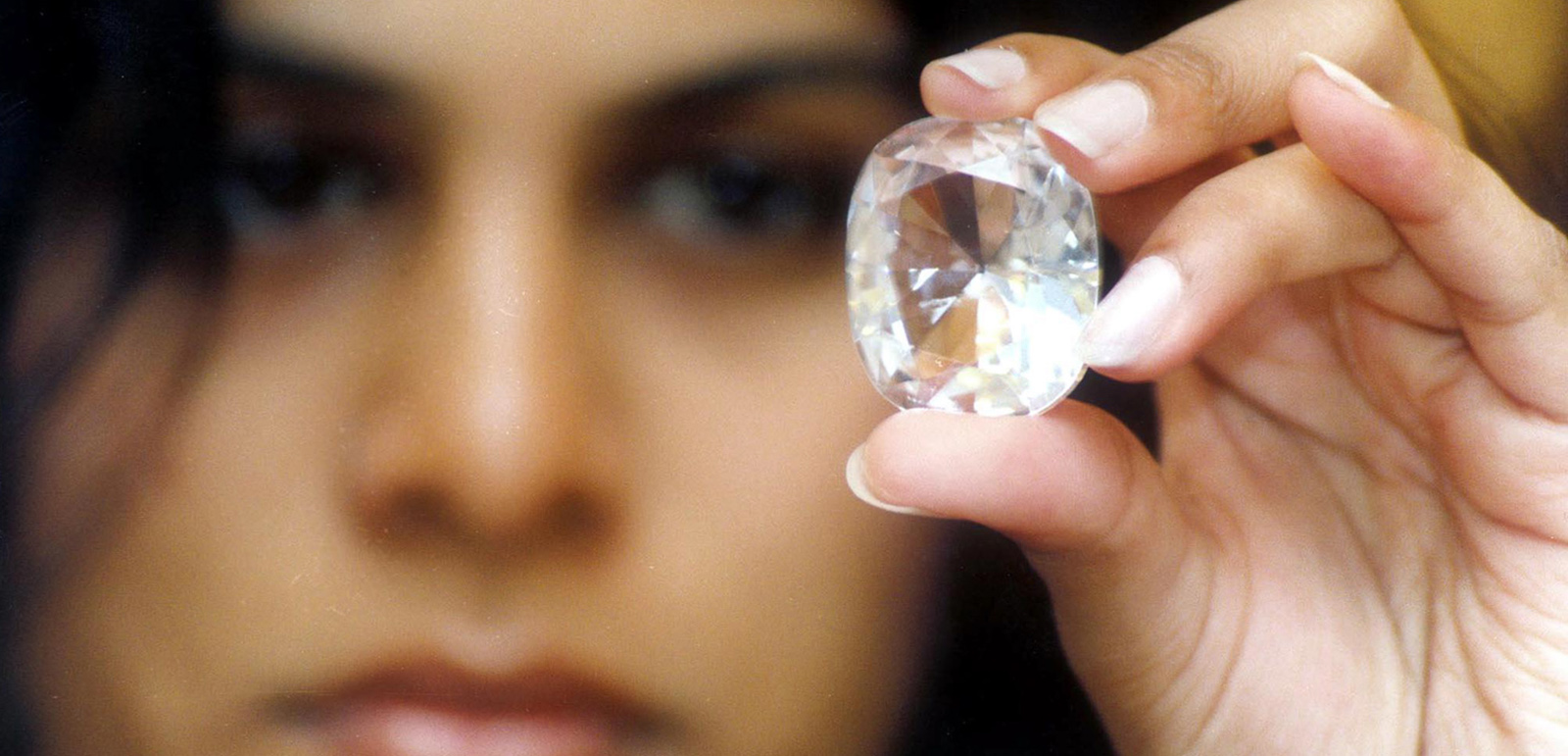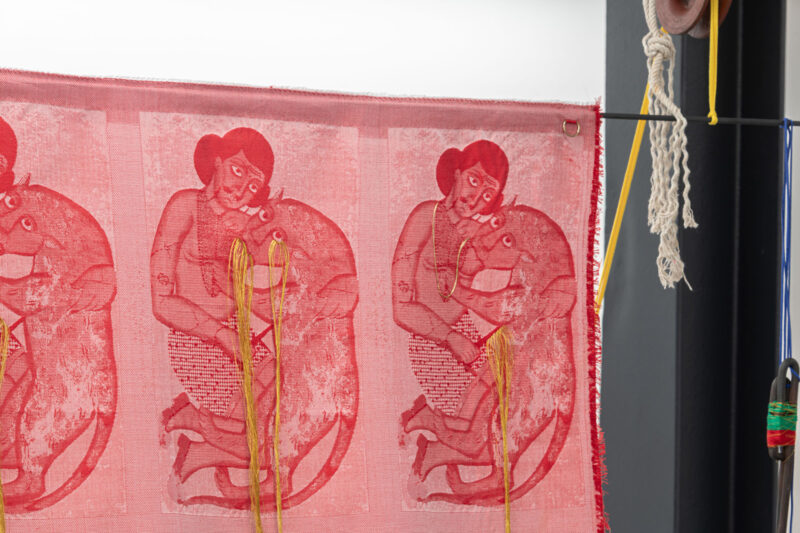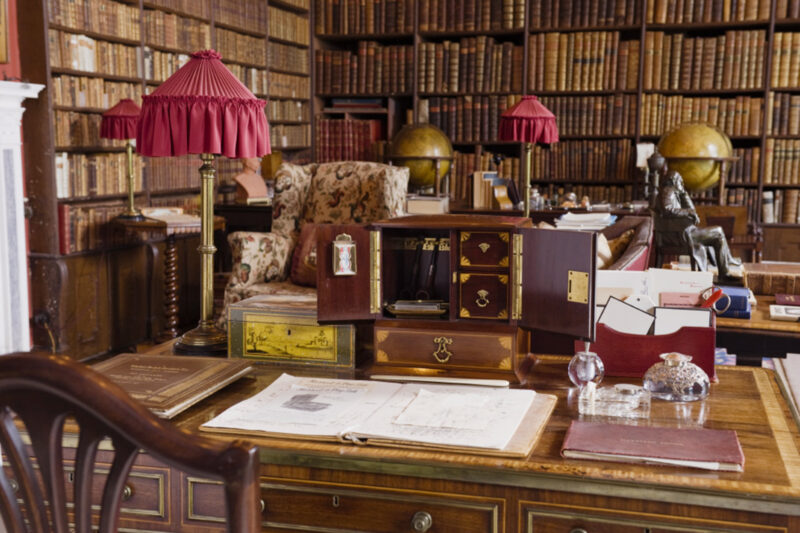The literary history of the Koh-i-noor diamond
Western and South Asian writers and poets have written about the gemstone — seized from India by the British — with often contradicting worldviews

As we continue to deconstruct the recent coronation of King Charles III, controversy around the British Crown’s possession of the Koh-i-noor diamond rumbles on. As soon as Queen Elizabeth II died, the prospect of Camilla wearing this crown jewel sparked outrage from commentators who view the diamond as colonial loot.
While it was confirmed the queen consort would not wear the crown containing the diamond, Vox delved into the Koh-i-noor’s controversial history, and prominent Indian historian and politician Shashi Tharoor spoke of the need for countries like the UK to atone for colonialist destruction.
Controversy has surrounded the British Crown’s possession of the Koh-i-noor since it was seized in 1849. Many people argue that the stone’s ongoing presence in the UK functions as a reminder of colonialism and the British empire’s exploitation of India.
Such ideas have helped fuel the current drive to repatriate valuable antiquities, with British-Indian broadcaster and author Narinder Kaur among those calling for the Koh-i-noor to be given back as a gesture of goodwill and acknowledgement of the harms caused by colonialism. However, others such as former UK prime minister David Cameron have argued that the diamond is now part of Britain’s cultural heritage, and that it is unclear to whom it would be returned.
A number of South Asian countries, including Pakistan, India, Bangladesh and Afghanistan, all claim ownership of the precious stone. Iran too stakes a claim, as the Persian king Nader Shah was one of the ill-fated rulers to have owned the diamond before the British appropriated it.
The history of the Koh-i-noor dates back to at least the early 17th century. It is believed by some Hindus to have been the mythical Syamantaka gem, with roots in ancient Hindu theological stories. Less mystical is the theory that the Koh-i-noor originated in a diamond mine in present-day Andhra Pradesh or Telangana, though evidence is sparse.
All we can say for certain is that the diamond passed through the hands of a number of rulers, including the Mughals. The gem’s first eye-witness mention under the Koh-i-noor name appears in the book Tarikh-i ’alam-ara-yi Nadiri (The World-Illuminating History of Nader) by the Persian historian Muhammad Kazim Marvi. In the 1740s, Marvi saw the stone adorning the opulent Peacock Throne, a royal seat built for the Mughal emperor Shah Jahan in 1635. The shah of Iran, Nader Shah, had recently taken the throne as spoils of war and had it reassembled in his home country.
The Afghans next took possession of the Koh-i-noor, followed by the Sikh Empire ruled by Ranjit Singh, the “Lion of the Punjab”. In 1849, the British East India Company seized the diamond following the defeat of the Sikh Empire after the death of Singh.
One popular belief surrounding the Koh-i-noor’s history is that the gemstone is a cursed object for male monarchs. This theory contains an element of truth: every man who has possessed the diamond is said to have met a tragic fate, including Mughal prince Shah Shuja (murdered in 1661), Nader Shah of Persia (assassinated in 1747), and Ahmad Shah Durrani of Afghanistan (died of a painful illness, thought to be cancer, in 1772).
In their book Koh-I-Noor: The Story of the World’s Most Infamous Diamond, writers Anita Anand and William Dalrymple explore its origins in India and its journey through different empires and kingdoms. Most affecting is the story of the deposed boy maharaja Duleep Singh, the youngest son of the late Ranjit, who was forced to sign the gem over to the British amid a power vacuum in the Punjab.
The diamond has also inspired fiction, including Wilkie Collins’ The Moonstone, published in 1868. Collins’ Victorian novel traces the theft of the Moonstone, a precious diamond that brings bad luck to its owners, from an Indian temple and its subsequent journey to England, where it is stolen again from a British household. Anand and Dalrymple further point to a less well-known novel by the British statesman and two-time prime minister, Benjamin Disraeli, Lothair (1870), whose plotline also revolves around gems taken from a maharaja.
A number of recent authors from South Asian backgrounds have also fictionalised the controversies surrounding the diamond. For them, the Koh-i-noor represents not only a priceless gem but also a symbol of colonial power and cultural exploitation which needs to be redirected away from the Western gaze.
Bharati Mukherjee’s The Holder of the World (1993) features an imaginary emperor’s diamond as a central element of its narrative. Partly set in the 18th century, the novel follows the story of a young American woman who travels to India escaping a puritanical upbringing. The Emperor’s Tear diamond plays an important role in her transformation from a Salem “good wife” into an adventurous and sexually confident woman of the world.
The diamond represents the wealth and power that came with India’s Mughal Empire, as well as the plunder and oppression that accompanied colonialism. Like the Koh-i-noor and the Moonstone, the Emperor’s Tear symbolises history, conquest, and identity, albeit refracted through a postcolonial, feminist lens.
In Aasma-i-Noor: The Cursed Jewel, published in 2022, Sudipta Sen Gupta uses the diamond as a vehicle for discussing colonial greed. This is a thrilling novel about ambition, love, and betrayal largely set in Bengal, Bihar, and Orissa. Sen Gupta’s gem, named the Aasma-i-Noor, is an appropriately blood-red diamond, which brings immense status and wealth to whoever possesses it.
When the jewel is caught in the crosshairs of a royal billionaire, the ruthless Naser Mirza, a descendent of the last nawab of Bengal, it triggers tumultuous events. As the novel’s British researcher character discovers the jewel’s history, he confronts his country’s own dark secrets and his countrymen’s lack of knowledge about their colonial past. Sen Gupta’s writing is politically astute and atmospheric, painting a vivid picture of both 18th Century South Asia and contemporary India, as well as the complex web of relationships that surround the cursed jewel.
The diamond has also featured in pulp and romance novels. Vaseem Khan’s 2016 crime caper The Perplexing Theft of the Jewel in the Crown is set in modern-day India and tracks the investigation of a daring theft of the diamond on loan to an exhibition in Mumbai from the Tower of London. Muddying crime fiction’s usual waters, where perpetrators are usually caught and punished, early on a character asks, “How can it be theft if you take back what was stolen from you in the first place?”.
But it is not solely in the English language that South Asian authors have expressed their fascination with the Koh-i-noor. I am studying both Hindi and Urdu and in the latter language, I found a long poem from the 1920s entitled Koh-E-Noor by Zia Jabalpuri, which is available for free download.
For Jabalpuri, as for most South Asians, the Koh-i-noor represents an item of extraordinary value, stolen by the British. In the poem this diamond becomes a metaphor for loss and longing. The poem’s penultimate stanza translates as follows:
I am just a stone on the road, not the Koh-e-Noor,
Not the crown on the queen’s beautiful head.
This is what I understand by loyalty:
That when your stomach is full, only then do I fill my stomach.
If there is a common thread that unites all literature about the diamond it is the idea that power, prejudice, and riches corrupt. It is time for Britain to reckon with its history of empire and ill-gotten gains. Reparations should be given to former colonies that suffered under the yoke of colonialism and British students taught about the robbery with violence that was the empire’s lifeblood.
 Newsletter
Newsletter













